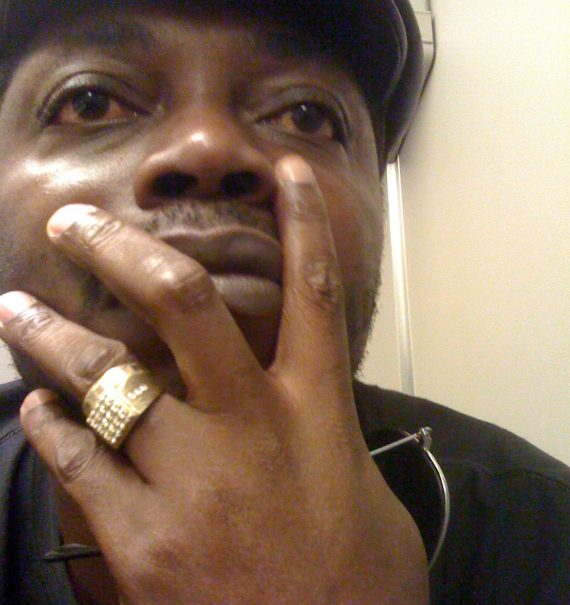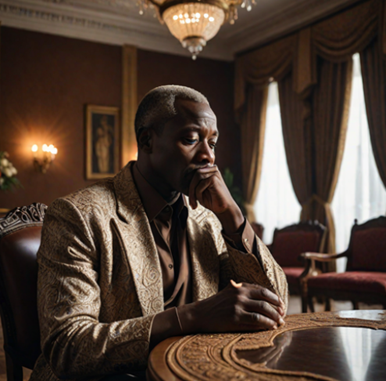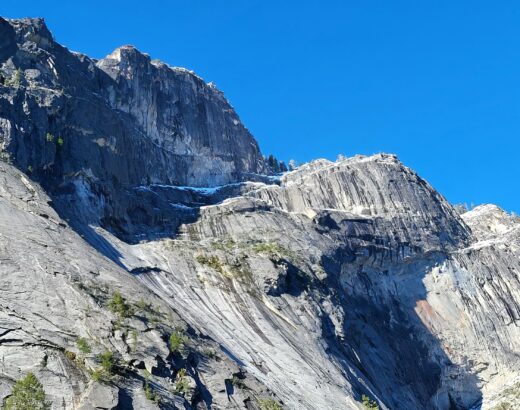Indian to Pacific Ocean by Road – Part III: Boondi Rocks to Cocklebiddy
This is Part III of our expedition report – the road trip from Perth in WA across the Nullabor and reaching the shores of Sydney with detours to Adelaide, Melbourne and Canberra along the way. The trip video, once fully edited will be shared by K2TV vide its YouTube site.
It wasn’t long for us to get to Coolgardie and we had to refill our fuel. A little pricey but we knew that the price would increase as we continue on the trip. The trip southwards on the Coolgardie–Esperance Highway was easy, except that we had to be careful with the Road trains. In passing through Coolgardie, we had avoided getting to Karlgolie and as such missed the opportunity to see the 1st of the 18 holes of the Nullabor Links – the World’s Longest Golf Course. It spans 1,365 kilometres with one hole in each participating town or roadhouse along the Eyre Highway, from Kalgoorlie in Western Australia to Ceduna in South Australia. Each hole includes a green and tee and somewhat rugged outback-style natural terrain fairway. We came across the other 17 holes as we travelled the Eyre Highway eastwards. We got to Norseman near mid-day and decided to take a break. I looked at the price displayed at the BP station and shook my head, a little pricey I said.
Norseman has a queer history. The town was said to have derived its name from a horse. Yes, a horse that made its owner rich. It was said that the horse had been tethered to a stable but ,using its hoof, it scratched the ground and revealed a nugget of gold. To us, Norseman was the point where we would make a go, no-go decision. My wife and I looked at each other, said a little prayer and we agreed – to the Pacific Ocean we head. As to the town itself, we saw little of this as we headed out eastwards. On our return journey, we took some time out in the town and will talk about this later.
From Norseman, our trip took an eastward direction on the Eyre Highway which leads to Port Augusta in South Australia. From its little beginnings in 1941, the highway was completed in 1976 and now act as the major artery for land transportation between the east and the west. We soon drove past the Dundas Nature Reserve, on to the Fraser Range headed to Balladonia. The traffic has thinned down to trickles by now and it was a sign of things to come. This is the road less travelled.
Belladonia:
Our plan was to drive as far as Caiguna and pass the night there. However, on reaching Balladonia, we couldn’t resist the urge to explore the little settlement. It was here that the US Skylab Space Station came crashing in 1979, 38 years ago. We walked into the roadhouse and visited the museum. A large piece of Skylab is still on display here, the letters “UNI STAT” were the only things clearly visible on the remains. Harley Davidson enthusiast will love the exhibit as well. A section is dedicated to the Perth to Sydney overland tour between 1926 and 1927 which showcases the ruggedness of the Harley bikes. A space in the wall has a car encased with occupants breaking through. It was a dedication to the REDEX endurance rally round-Australia in the 1950s. There were other artifacts in the museum, the essence being to promote Belladonia as a tourist destination.
We got back into “The Explorer” and continued on our eastward journey. Caiguna was the target for our next stop. Our pre-trip planning had informed of the “90 Mile Straight” being between Belladonia and Caiguna on this highway. We were looking forward to the drive but little did we know that it was that close to where we were. As we pulled out of Belladonia, we made a bend and there it was – the “90 Mile Straight”. The signpost was big enough but we could have missed it in a blink. We pulled up by the sign and took some pictures and a video clip. This is Australia’s longest straight road stretching for 145 kms towards Caiguna. What spurred the road engineers to creating this, we may not know. According to the theory of everything, as proposed by me, it was not created by design but must have occurred naturally. With the Nullabor being a flat topographical land, the engineers had no hills to contend with and a straight line being the shortest distance between two points became the way to go.
One would think that driving on a straight road is “easy pitzy”, wrong! Getting on the 90 Mile Straight was not without its dangers. With no curves, bends or sharp turning, it is a battle against weariness and sleep. Everything looked the same, as the Explorer sped on at the legally allowed 110km per hour. What one sees a minute ago is the same as what one sees now. The scenery was monotonous and except for a break here and there by the passing of another lonely, and probably weary, driver, all that confronts the eyes was a long stretch of open road. You can almost see the curvature of the earth as you look into the distance. We needed no other lecture to agree that the Earth is truly round.
The other lecture that we wouldn’t be needing as well is about the food chain. Collisions between Kangaroos and Vehicles in the Australian Outback is a fact of life. it’s not if, it’s always when. The Kangaroos will keep on sprinting and attracted by the lights f vehicles, will sprint across the roads. The vehicles will not stop driving and hence collisions will happen. When it does, the poor Kangaroos pay with their lives. Nothing gets wasted in the outback. Minutes after death comes calling, the bird of preys will visit. As we drove on the 90 Miles Straight, sights of giant Eagles and other birds feasting on dead Kangaroos became the norm. The Eagles feast alone, and seeing these bird with their claws and beaks, they got our respects. By the time the eagle has gotten its fill, the other birds come to pick theirs and soon, very soon, nothing remains of Skippy, except the bones and maybe the tough skin. These decompose and no race of Skippy remains again. The food chain demonstrated in our full glare.
Caiguna:
We reached Caiguna in good time. 5kms away from Caiguna, we saw the signpost pointing us to divert to our right to see the blowhole. We have encountered blow holes before and we couldn’t immediately convinced ourselves to branch. The decision was made for us when the dirt beated 4WD truck that was ahead of us took a turn towards the blowhole. If he could, we can. We diverted. With our attentions focussed on the truck, we kept on its trail inwards for another six minutes on a dirt road through the shrubs, all the time spinning to the sky brown dirt from the road. Just a little further ahead, the 4WD decided it had gone as far as he would and turned back. We were convinced that the blow hole was still a little further inland and continued until we reached the end of the road. Out there we came across two families of Kangaroos in the bush, they took to their hills skipping across the wide plains. Watching as these cross our path with surprising agilities, we were mesmerized. These animals can cover long distances with short bursts of speed. No blow holes were seen. Dejected, we turned back and headed for the main road. In a little clearing as we were about to join the road, was the blow hole. We laughed at our stupidity in following the 4WD all along.
The blow hole at Caiguna was created from a series of underlying caves created out of the limestone formation. The caves are alive and breathing. When caves ‘breathe’, the air pressure falls and rises. The Caiguna blowhole breathe more vigorously than all the other caves in Australia. It is said air movement at the cave entrance can reach around 72 kilometres per hour. At the blowhole, one can feel the earth breathing through the air currents.
I don’t think it’s worth spending any time here. It is an attraction that is well blown out of proportion. Our discovering them was actually surprising. We had seen a signpost directing us to the holes and we took a turn to our right. Just ahead of us was a caravan pulling 4 wheel drive. It seemed not to be bothered with the unevenness of the unsealed road. It was spilling up dusts and we were in hot pursuit, wrongly believing that the holes were much further away. After a couple of minutes on its tail, the 4 WD took a surprising U-turn and headed towards us. It soon got past us and we were left to find our way, either forward or backwards. We surged forward. Our adventure was well rewarded with the sight of a family of kangaroos that were in the bushes. On sighting us, they took to sprinting away from the side of the unsealed road. We soon got to the end of the road and there was no sign of any blowhole. We were dejected and had to return the way we came. As we were about to join the Eyre Highway, we finally saw the holes, they were just right in front of us and had our attention not to have been diverted by the caravan pulling 4wd, we most likely would have seen them earlier. The fading write up next to the hole talked about its formation and the fact that most of the coastal land in the area are limestones.
Cocklebiddy:
We continued our journey and arrived Cocklebiddy late in the evening. Cocklebiddy started as an Aboriginal mission station, of which only the stone foundations remain today. In replacement is a roadhouse, next to the highway. My wife went in to book a spot for us to set up camp for the night. She came back with a bill of $25.
Just outside, in the open, was a black slate on which the population of the town was written. It informed that there were 8 people inhabiting the area along with 1,234,567 Kangaroos! I was too tire to ask the reasonable question – How was the Kangaroo census conducted? We don’t know but the sign accurately reflects the notion – there are more Kangaroos in Cocklebiddy than people. We paid for a caravan spot and met some other families already settled into various spots for the night.
Cocklebiddy is best seen as a hamlet made of a roadhouse and a filling station. I think it was an abandoned mining site that has been redeveloped for catering to the needs of weary travellers on the long sojourn to cross from Western Australia to South Australia. The amenities in the caravan park were good. The usual option – powered sites, non-powered sites, bathroom, toilets etc. It was here, in Cocklebiddy, that we came across faith in the most desolate of places. There were these two gals who have arrived Cockle biddy earlier than we did. With piercings on the body of one and tattoos all over that of the other, their appearance caught our attention. We, in our minds, had rushed to judge these two ladies as low lives and probably of no good. For whatever reasons she had, Saf stirred up a conversation with the ladies and the sweetness of their Spirit began to be revealed. We got to learn that they were on a journey to attend “Adelaide for Christ” and they have met in Perth and became friends only a few months ago.
In the morning, our lady friends were already prepared to leave before we came down from our tent. We asked for permission for an interview and this was granted. We did a few basic questions and answers and thereafter a call to prayers was made by the ladies. It was just so touching to realise that these young ladies did have Christ in their minds. As we prepared to leave, we found a large rectangular enclosure containing two giant bird. These were Eagles. Looking at these birds at close distance brings about a better appreciation of what an Eagle is. The claws at their feet, the massive wing-span, said to be as long as 2.5m and their sheer strength are humbling. They however look sad, probably because of they were in a cage. The Golf across the Nullabor has a hole here in Cocklebiddy named Eagles Nest, most likely named because of these rescued Eagles in Cocklebiddy. It is a par 4 hole.
—-Continued in Part IV—-









